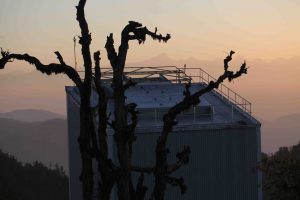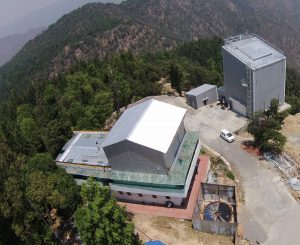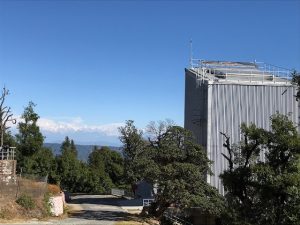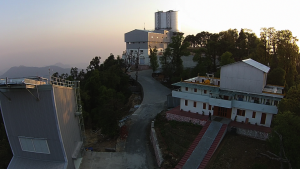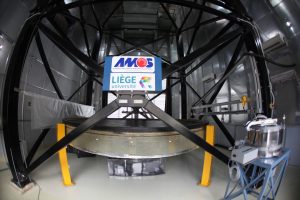Liquid Mirror Telescope: Basics
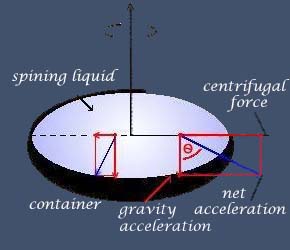 A rotating liquid surface takes the shape of a paraboloid under the constant pull of gravity and the centrifugal acceleration, which grows stronger with the distance from the central axis (E. Cappoci, 1850). The parabolic shape occurs because a liquid surface always sets its local surface perpendicular to the net acceleration it experiences, which in this case becomes stronger and more inclined with distance from the central axis.
A rotating liquid surface takes the shape of a paraboloid under the constant pull of gravity and the centrifugal acceleration, which grows stronger with the distance from the central axis (E. Cappoci, 1850). The parabolic shape occurs because a liquid surface always sets its local surface perpendicular to the net acceleration it experiences, which in this case becomes stronger and more inclined with distance from the central axis.
A parabolic liquid mirror is thus made by rotating a highly reflective liquid (such as mercury). As we all know, a perfect reflecting paraboloid represents the ideal surface for a mirror to focus parallel rays of light into a single point.
Consequently, a Liquid Mirror Telescope can be made by using a liquid mirror as the primary mirror and by putting a camera at the focal point of the paraboloid.
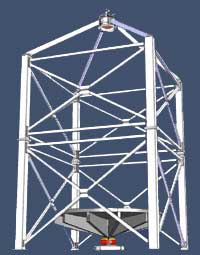
Liquid mirror telescopes are Zenithal pointing telescopes: they can only see a small field of view around the Zenith (point along the local vertical direction). Pointing objects, as done when using classical technology telescopes, is no longer possible. Integrating images with LMTs is done using a new real-time imaging technique called Time Delayed Integration (TDI).
Thanks to the Earth rotation, the telescope scans a strip of constant declination equal to the latitude of the observatory. Because a LMT observes the same region of the sky night after night, it is possible either to co-add the images taken on different nights in order to improve the limiting magnitude attainable with a LMT, or to subtract images taken on different nights to make a variability study of the corresponding strip of sky. Consequently, a LMT is very well suited to perform variability studies of the strip of sky it observes.
The LMT didactical experiment:
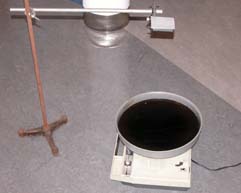 A gramophone with a turntable of 20 cm in diameter may provide us with a perfect liquid mirror characterized by a focal ratio f /D ~ 2, a very acceptable value for an astronomical mirror. A focal length of approximately 40 cm is obtained for a value of the angular velocity of 33 turns per minute …
A gramophone with a turntable of 20 cm in diameter may provide us with a perfect liquid mirror characterized by a focal ratio f /D ~ 2, a very acceptable value for an astronomical mirror. A focal length of approximately 40 cm is obtained for a value of the angular velocity of 33 turns per minute …
A pdf file describing the Liquid Mirror Telescope simulation

